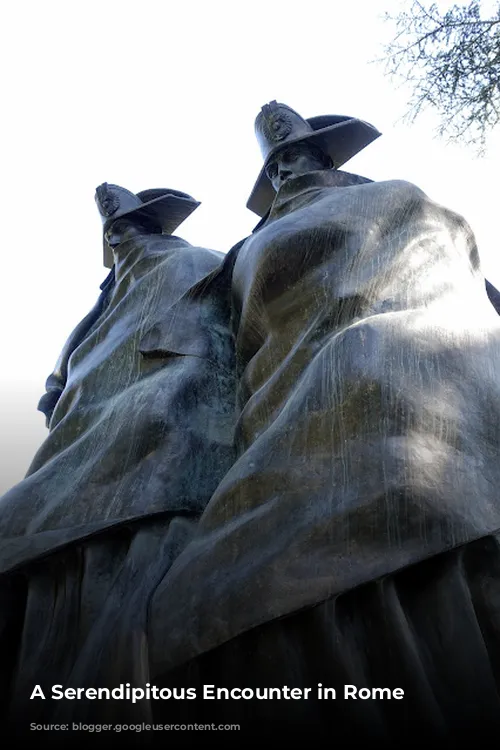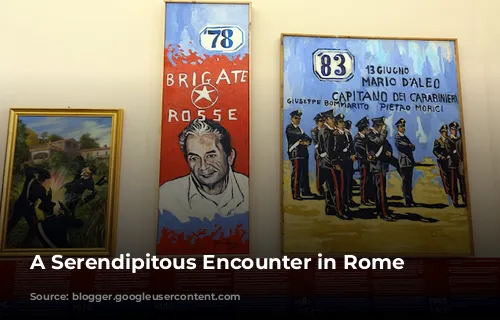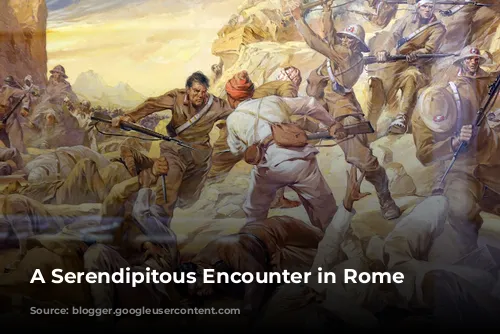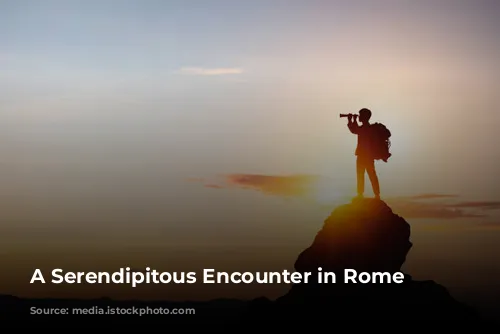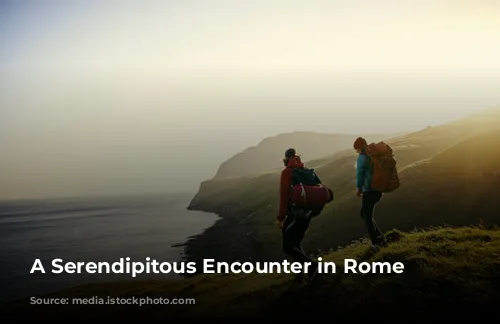Our Roman adventure began with a detour, a stumble into a park across from the Quirinale Palace while waiting for our museum tickets. The park’s centerpiece, a traditional equestrian statue of Carlo Alberto, barely registered. Instead, our eyes were drawn to a more intriguing sculpture nestled away on the park’s fringes, a statue of two figures, seemingly forgotten. Though unfamiliar to us, their flowing capes and bicorn hats must have been immediately recognizable to locals. A bit of online sleuthing revealed that the figures represent Carabinieri from 1814, the year this national police force was established as the King’s police. This striking statue, unveiled in 2014, celebrated the Carabinieri’s bicentennial.
Created by the Florentine sculptor Antonio Berti, this statue, aptly named “La pattuglia nella tempesta” (“The patrol in the storm”), depicts the Carabinieri braving any weather to assist their fellow citizens. We were captivated by the statue’s dynamism and the sense of duty it conveyed. Though we felt it reminiscent of Rodin’s Balzac, we knew our comparison might be a stretch.
A Tangled Web of History and Ideology
While researching the statue’s history, we stumbled upon a thought-provoking article by Dr. Jonathan Dunnage titled “Italian policemen and fascist ideology.” This intriguing article sparked a debate. Many Italians view the Carabinieri and the Fascist regime as intrinsically linked: the King’s police, supporting the Fascist King. When the King distanced himself from Mussolini, so too did the Carabinieri, simply doing their duty.
Dr. Dunnage presents a more nuanced perspective. He argues that the Carabinieri, along with the Interior Ministry police, played crucial roles in enforcing the Fascist dictatorship. While acknowledging that the Carabinieri were perhaps more independent than the police, he believes both organizations benefited from a regime that promised to restore law and order after the chaotic “Red Two Years” (1919-1920). Dr. Dunnage suggests that many Carabinieri saw the Fascist regime as an opportunity to “protect” Italian society from perceived threats posed by anarchists, socialists, and communists, whom they historically viewed as a danger to public order.
Revisited: The Carabinieri Museum
Fueled by our newfound curiosity and a lively lunch with two Roman friends, we returned to the Museo storico dell’Arma dei Carabinieri (Carabinieri Museum) in Piazza del Risorgimento. This wasn’t our first visit; we had previously attended a press conference there about the Carabinieri’s art recovery efforts. Our Roman friends informed us that the museum had undergone a much-needed revamp, including the addition of English-language signage. We couldn’t wait to see it.
The museum, indeed, was reborn. The first floor, in particular, was better organized and displayed information in both Italian and English. Paintings, more evocative than photographs, depicted the Carabinieri’s courage in the face of adversity. One particularly poignant image showed a Carabinieri serving in Barmash (Albania), who, despite facing overwhelming enemy forces, bravely defended his post until his ammunition ran out.
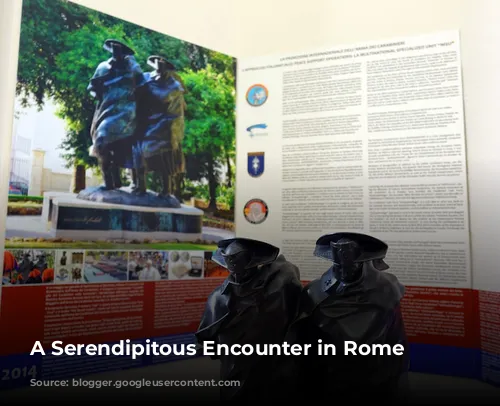
A History Silenced: The Fascist Era
The museum’s historical panorama spanned the Fascist era (20+ years), but a curious lack of information regarding this period was apparent. We found only a few subtle references to Mussolini and Fascism. For example, a collection of annual calendars included one featuring Mussolini on the cover. However, this calendar was placed high on the wall, making it difficult to photograph. The Fascist era was represented through the Fascist calendar numbering system, with the Mussolini-featured calendar dated XVII E.F. (17th year of the Fascist Era).
While the museum’s website is a rich resource, a search for “Mussolini” or “Fascism” yields mostly indirect references. One such entry, “I Carabinieri nel novecento italiano – la fine delle illusioni” (The Carabinieri in 1900s Italy: the end of illusions), provided a good summary of Italy at the end of the Fascist era, yet failed to address the role of the Carabinieri during that period. This pattern was repeated with other entries mentioning Fascism.
A Legacy of Resistance and Bravery
The museum’s narrative shifted dramatically after 1943, portraying the Carabinieri’s participation in the Resistance movement. Many Carabinieri bravely fought against the Nazis after the King abandoned Mussolini. The museum commemorates the 12 Carabinieri who were murdered in the Fosse Ardeatine massacre outside Rome. A monument to these fallen heroes stands prominently within the museum.
The museum’s exhibits continued, chronicling the Carabinieri’s struggle against the Red Brigades during the 1970s and 1980s, including a portrait of politician and statesman Aldo Moro, assassinated in 1978. A painting depicting the 1983 ambush and killing of Carabinieri, led by Mario D’Aleo, by the Mafia in Sicily, served as a stark reminder of the dangers faced by this force.
The End of Our Rabbit Hole
The museum’s tour concluded with a poignant reminder of our original discovery – “La pattuglia nella tempesta.” The statue, a popular attraction, even had its own mini-replicas for sale, reminding us that the Carabinieri’s legacy lives on, inspiring both reverence and debate. Our exploration of this historical rabbit hole left us with a deeper appreciation for the Carabinieri, both their valiant efforts in the face of danger and the complex role they played in a turbulent era.
